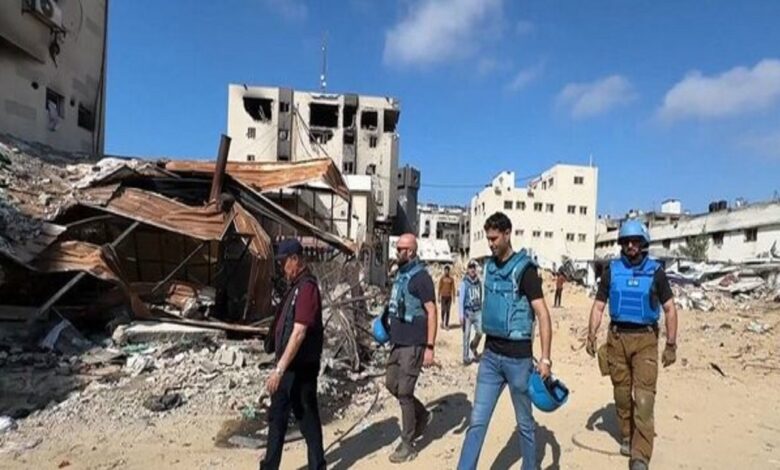Narration of the UN official about the situation of Gaza hospitals

| The representative of the United Nations Population Fund in Palestine described the situation in the Gaza Strip as a "human hell". |
The United Nations Population Fund representative in Palestine, after 6 and a half months of attacks on the health sector of Gaza and destroyed hospitals in the north, center and south of Gaza, after returning from His mission described the situation in the Gaza Strip as a “human hell”.
Speaking to reporters at UN headquarters in Geneva via video from occupied Jerusalem, Dominic Allen, UNFPA representative in Palestine, said: “What I witnessed is heartbreaking and indescribable. We saw that medical equipment was deliberately broken and destroyed. “Critical ultrasound machines that are vital to help ensure the safe birth of babies have had their wires cut and their screens smashed.”
This international mission was carried out by the United Nations Reproductive Health Agency in cooperation with the World Health Organization, the United Nations Office for the Coordination of Humanitarian Affairs and UNRWA.
According to the United Nations, the purpose of this mission was to visit about 10 hospitals, including Al-Aqsa Hospital in the center of Gaza, which is facing a volume exceeding its capacity due to the large number of trauma patients (physical injuries) and is no longer able to provide fertility care. It is not.
This UNFPA official said: “I am horrified by the situation of one million women and girls in Gaza right now, especially the 180 women who give birth every day in unimaginably inhumane conditions.”
Before the war, 15% of births required emergency medical care, but according to some reports, this percentage has now doubled.
Dominic Allen said: “These numbers have increased. Some doctors say that childbirth-related complications are now more than double what they used to be, due to malnutrition, dehydration, and fear, all of which affect a pregnant woman’s ability to deliver safely and complete her term. It affects the entire pregnancy.”
Al-Shafa Hospital, which was the largest hospital in Gaza, was destroyed. In Rafah in the south, the Emirati hospital, which is a lifeline for pregnant women in Gaza, performs between 50 and 60 deliveries a day, including 10 to 12 caesareans.
>
Members of the United Nations Population Fund, with the support of the United Nations Demining Service, visited Nasser Hospital in Khan Yunis, from which Israeli forces withdrew weeks ago.
This hospital has a maternity ward supported by fund teams.
Allan said: “When we visited Nasser Hospital – despite the demining service – we had to be careful as we walked through the entrance to the hospital because of the presence of unexploded ordnance.”
He added that he hardly recognized the place he visited 2 months ago due to the extent of the destruction.
Three shelter centers (former schools) run by the United Nations Relief and Works Agency for Palestine Refugees (UNRWA) are used as emergency medical centers to send midwives to help pregnant women who cannot receive antenatal care. , were converted.
He expressed concern about the possibility of a military attack on Rafah – where about 1.2 million people live – and its impact on the humanitarian disaster there.
Source: ISNA
| © | Webangah News Hub has translated this news from the source of Young Journalists Club |


